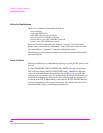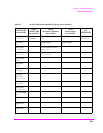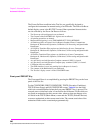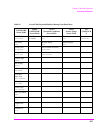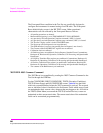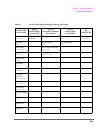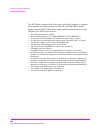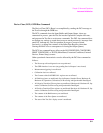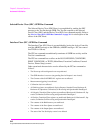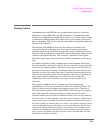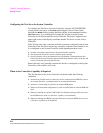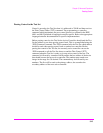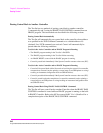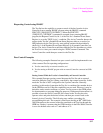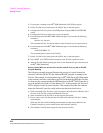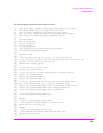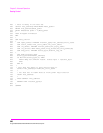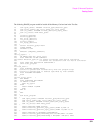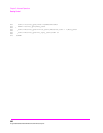
313
Chapter 5, Advanced Operations
Passing Control
Passing Control
Communications on the GPIB bus are accomplished according to a precisely
defined set of rules (IEEE 488.1 and 488.2 Standards). Communication (data
transfer) is accomplished by designating one device to be a talker (source of data
or commands) and designating one or more devices to be listeners (receivers of
data or commands). The device on the bus responsible for designating talkers and
listeners is the Controller.
The structure of the GPIB bus allows for more than one Controller to be
connected to the bus at the same time. As a means of ensuring that orderly
communications can be established on power-up or when communications have
failed, the rules state that only one Controller can unconditionally demand control
of the bus (through the IFC line). This controller is referred to as the System
Controller. There can be only one System Controller connected to the bus at any
time.
As a means of ensuring orderly communications in environments where more
than one controller is connected to the bus, the rules state that only one Controller
can be actively addressing talkers and listeners at any given time. This device is
referred to as the Active Controller. The System Controller is the default Active
Controller on power-up or after a bus reset. Controllers which are not the Active
Controller are referred to as Non-Active Controllers. The Active Controller can
pass control of device addressing to one of the Non-Active Controllers.
Additionally, Non-Active Controllers can request control from the Active
Controller.
The process by which the Active Controller passes device addressing
responsibility to a Non-Active Controller is referred to as Passing Control. The
Active Controller must first address the prospective new Active Controller to
Talk, after which it sends the Take Control Talker (TCT) message across the bus.
If the other Controller accepts the message it assumes the role of Active
Controller and the previous Active Controller becomes a Non-Active Controller.
The Test Set has bus control capability (Active/Non-Active Controller). Additionally the
Test Set can be also be configured as the System Controller. By definition then, the Test
Set has the capability to demand control, pass control, accept control, and request control
of the bus depending upon its configuration, its current operating mode, and the system
configuration. Many possibilities for passing control among several controllers on the
same bus exist. Attempting to identify all the possible techniques of passing control in
such a system is beyond the scope of this document (refer to the IEEE 488.1 and 488.2
Standards for additional information).



